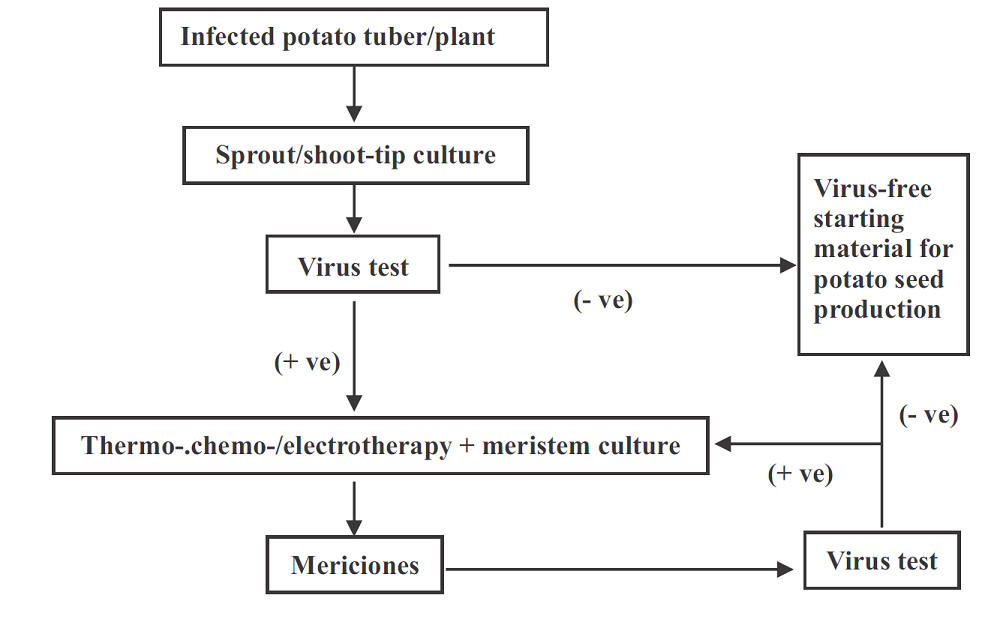
Pathogen elimination through meristem culture
Meristem culture is a procedure in which apical or axillary growing tips (0.1-0.3 mm) are dissected and allowed to grow into plantlets on artificial nutrient media under controlled conditions. The meristem culture technique for virus elimination is essentially based on the principle that many viruses are unable to infect the apical/axillary meristems of a growing plant and that a virus-free plant can be produced if a small (0.1-0.3 mm) piece of meristematic tissue is propagated (Morel and Martin 1952). However, despite the phenomenal success of meristem culture in elimination of plant viruses, it remains still unclear as to why the apical/axillary meristems contain little or no virus? Some of the explanations are: (i) vascular system through which virus particles are spread is not developed in the meristematic region; (ii) chromosome replication during mitosis and high auxin content in the meristem may inhibit virus multiplication through interference with viral nucleic acid metabolism; and (iii) existence of a virus- inactivating system with greater activity in the apical region than elsewhere.
Excision of very small meristems requires a high degree of expertise and the development of plants from these small meristems (mericlones) takes as long as four to eight months. Moreover, the percentage of virus freedom in regenerated mericlones is very low. As a result, meristem culture is mostly combined with thermotherapy (high temperature treatment) or chemotheraphy (treatment with antiviral compounds) to increase the likelihood of obtaining virus-free plants (Figure 1). Replication of many plant viruses is significantly reduced when the host plant is grown at elevated temperatures (Spiegel et al. 1993). It has also been suggested that disruption in the production or activity of virus-encoded movement proteins which are involved in cellto- cell movement of viruses through plasmodesmata may also play a role in the effectiveness of heat therapy for virus elimination (Martin and Postman 1999).

Fig. 1 :
Schematic presentation of virus elimination in potato.